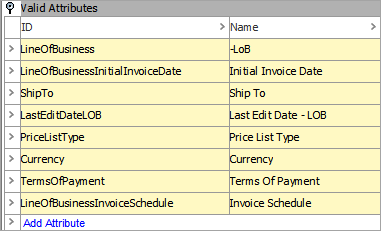Introduction
The term 'Line of Business' is defined by Gartner as 'a corporate subdivision focused on a single product or family of products.' It is quite common for Business-to-Business (B2B) organizations to be able to manage their operational master data across multiple lines of businesses (LOB).
For example, CleanGoods Manufacturer, operates across a number of different LOBs:
- Household Cleaning Supplies – Cleaners and chemical cleaning agents manufactured and marketed towards typical household consumers.
- Consumer Charcoal – Consumer-grade charcoal of varying types. Manufactured and marketed for us with barbecue grills.
- Professional Cleaning Supplies – Cleaners and chemical cleaning agents manufactured and marketed towards businesses and institutions such as schools, professional contractors, government entities, etc.
Generally, one LOB may be a subdivision focused on perishable goods that are manufactured, marketed, and sold to average household consumers, whereas another LOB may be focused on selling to professional businesses such as hospitals, corporations, or government entities.
To further illustrate this concept, BlueBox Retailer is a fictitious retail business that is a direct customer to CleanGoods, specifically for CleanGoods Household Cleaning Supplies and CleanGoods Consumer Charcoal.
For the sake of ease, CleanGoods should master the customer data of a particular BlueBox retail store, as one Organization Customer Entity, which is shared amongst the different LOBs. This model makes it possible to keep an overview of all interactions with BlueBox, across the LOBs and optimizes the process of having one accurate and complete version of information about BlueBox, across the enterprise.
While this implementation works for these use cases, CleanGoods Household Cleaning Supplies and CleanGoods Consumer Charcoal do not handle all interactions with BlueBox the same way. Instead, they use different invoice schedules and ship-to destinations. This information is treated as customer master data while being LOB specific.
Data Model Explained
LOB-specific customer data should be modeled as data containers on an Organization Customer Entity.
In the example of CleanGoods and BlueBox, exactly one Entity would exist for one particular BlueBox retail store. That Entity would have two data container objects of type 'LineOfBusinessData,' as outlined below.

The initial pre-configurations will include the following attributes associated with LOB data containers:

Data containers are used to model LOB data as associated to a customer record. Each LOB is its own data container object with corresponding attributes and references. The initial configuration for the LineOfBusiness attribute is a data container key. This configuration allows only one entry of each LineOfBusiness per customer.